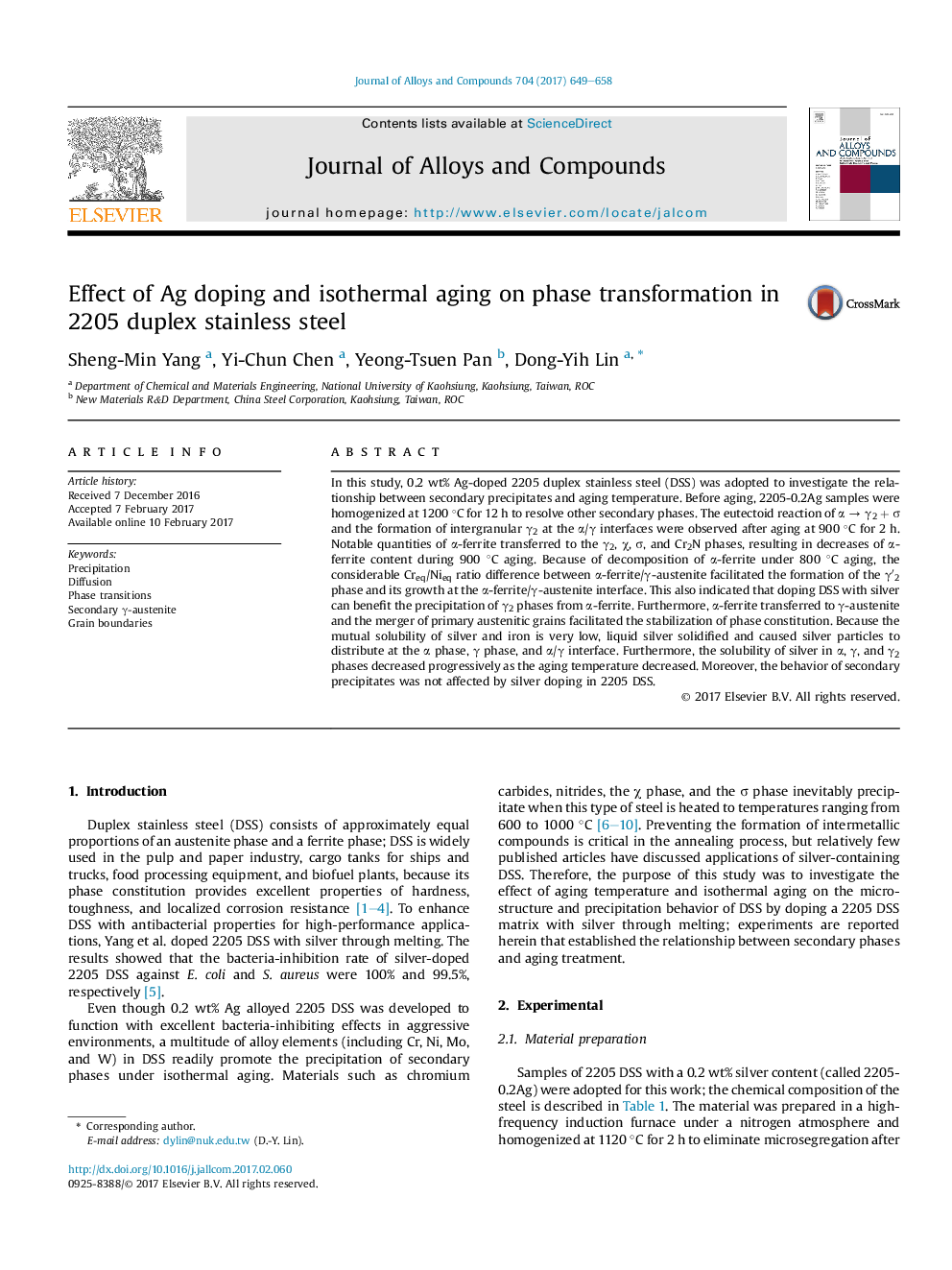| Article ID | Journal | Published Year | Pages | File Type |
|---|---|---|---|---|
| 5460039 | Journal of Alloys and Compounds | 2017 | 10 Pages |
Abstract
In this study, 0.2 wt% Ag-doped 2205 duplex stainless steel (DSS) was adopted to investigate the relationship between secondary precipitates and aging temperature. Before aging, 2205-0.2Ag samples were homogenized at 1200 °C for 12 h to resolve other secondary phases. The eutectoid reaction of α â γ2 +Â Ï and the formation of intergranular γ2 at the α/γ interfaces were observed after aging at 900 °C for 2 h. Notable quantities of α-ferrite transferred to the γ2, Ï, Ï, and Cr2N phases, resulting in decreases of α-ferrite content during 900 °C aging. Because of decomposition of α-ferrite under 800 °C aging, the considerable Creq/Nieq ratio difference between α-ferrite/γ-austenite facilitated the formation of the γâ²2 phase and its growth at the α-ferrite/γ-austenite interface. This also indicated that doping DSS with silver can benefit the precipitation of γ2 phases from α-ferrite. Furthermore, α-ferrite transferred to γ-austenite and the merger of primary austenitic grains facilitated the stabilization of phase constitution. Because the mutual solubility of silver and iron is very low, liquid silver solidified and caused silver particles to distribute at the α phase, γ phase, and α/γ interface. Furthermore, the solubility of silver in α, γ, and γ2 phases decreased progressively as the aging temperature decreased. Moreover, the behavior of secondary precipitates was not affected by silver doping in 2205 DSS.
Related Topics
Physical Sciences and Engineering
Materials Science
Metals and Alloys
Authors
Sheng-Min Yang, Yi-Chun Chen, Yeong-Tsuen Pan, Dong-Yih Lin,
